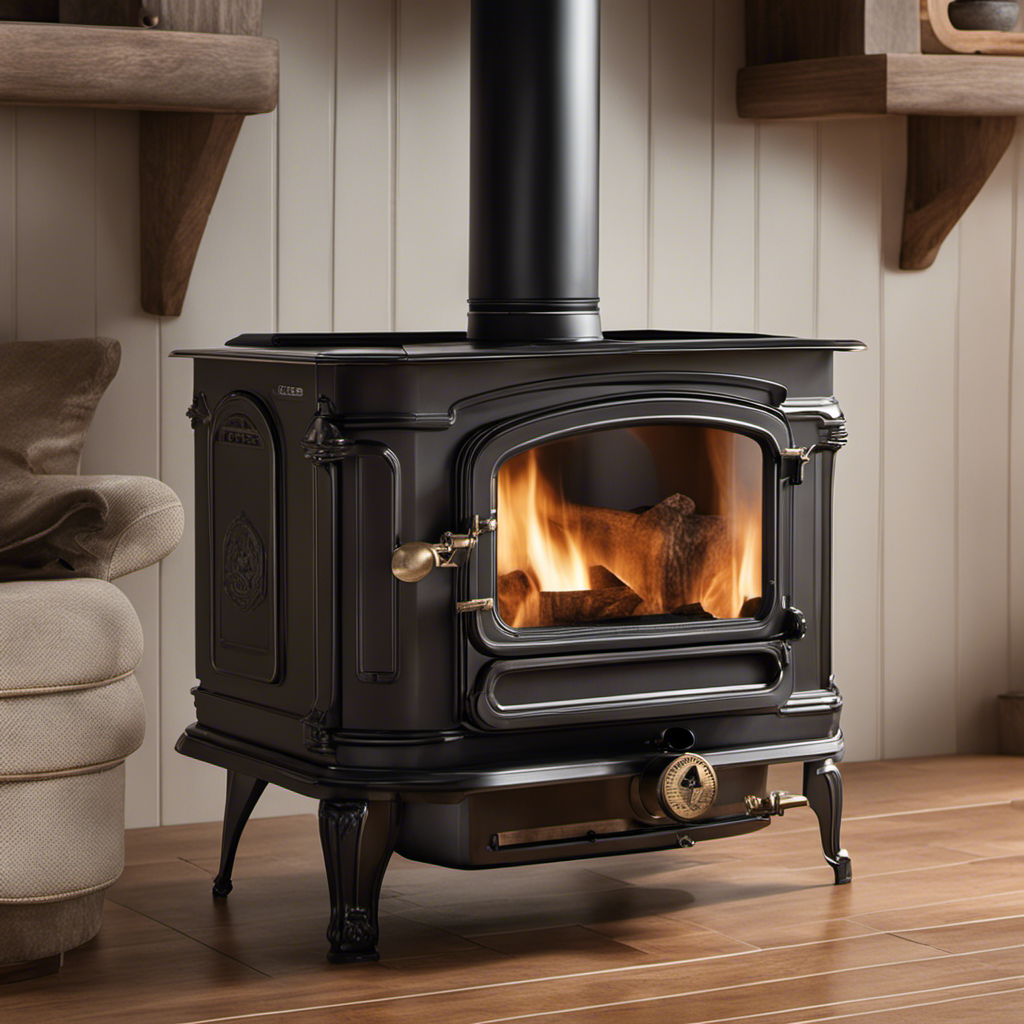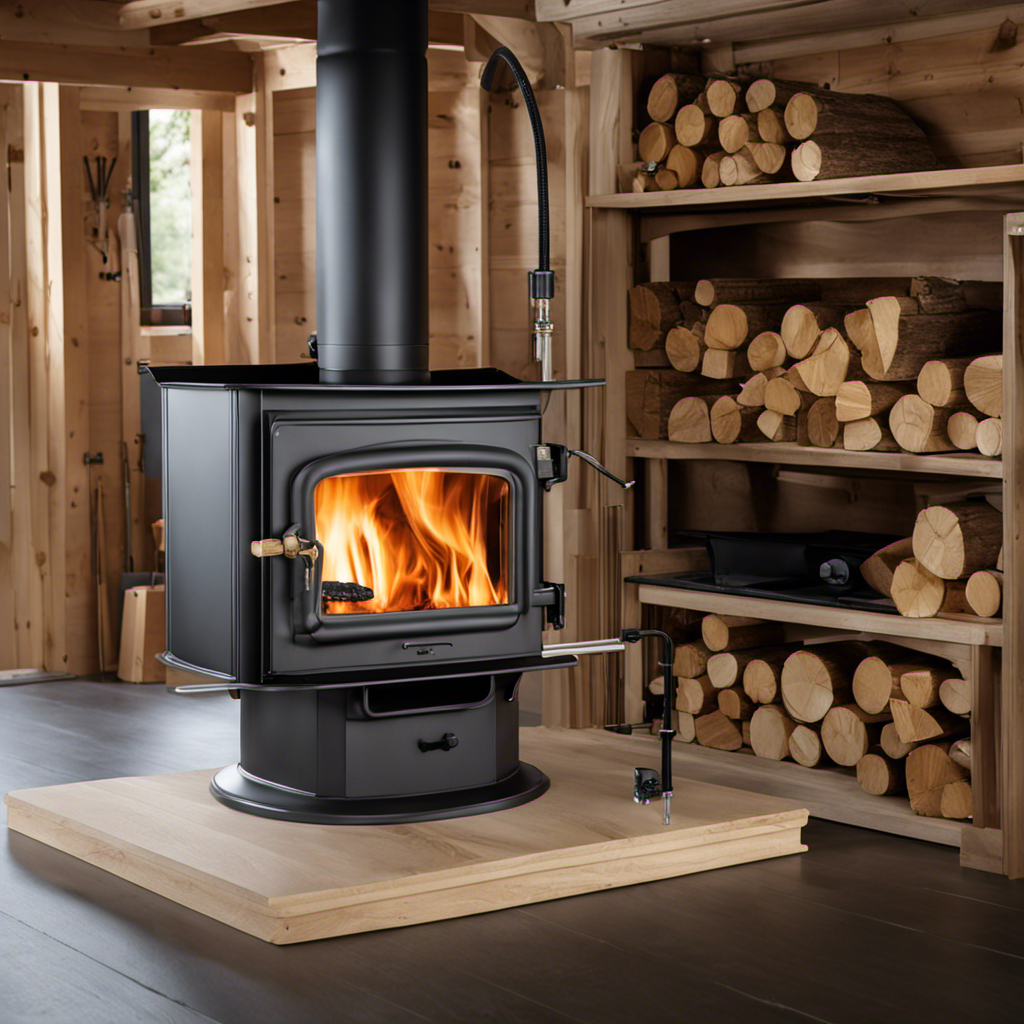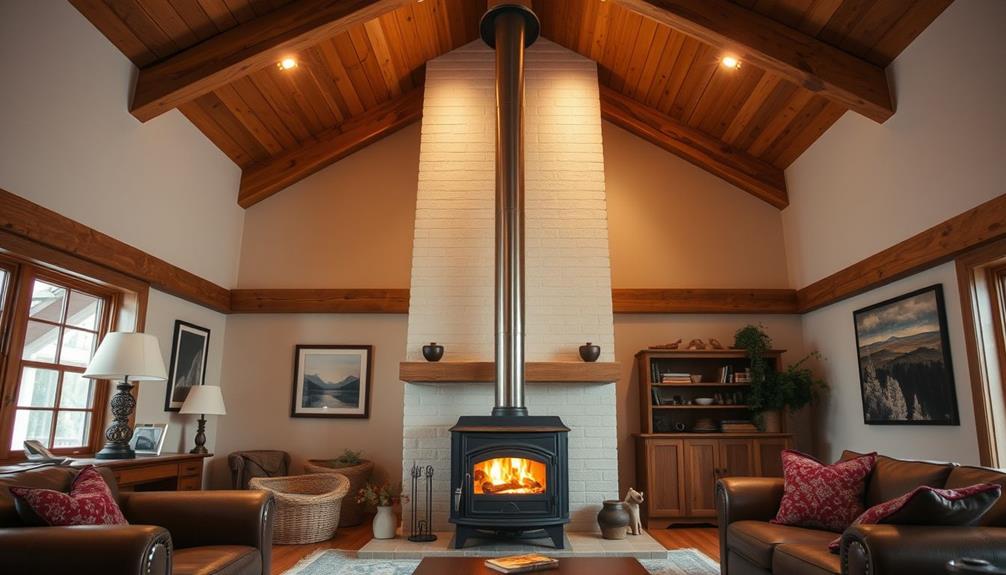Have you ever thought about how to determine if a wood stove is certified? Let me provide you with information on this crucial subject.
In this article, we will explore the significance of certification, the criteria for EPA certification, the ANSI/UL standards to look for, and the third-party certification labels to identify.
Moreover, we will delve into the importance of verifying compliance with local building codes.
So, let’s dive in and become experts in recognizing certified wood stoves!
Key Takeaways
- Certification ensures safety and performance standards
- EPA certification ensures safety and efficiency with specified emissions limits
- ANSI/UL standards help identify scams and ensure reliability
- Third-party certification labels indicate safety and reliability
Understanding the Importance of Certification
I understand the importance of certification and its impact on determining if a wood stove is safe and reliable.
When it comes to wood stoves, certification provides several benefits. Firstly, a certified wood stove ensures that it meets specific safety and performance standards set by independent testing laboratories. This guarantees that the stove has undergone rigorous testing and is capable of providing efficient heat while minimizing the risk of fire hazards.
Additionally, certification allows consumers to qualify for various incentives, such as tax credits or insurance discounts. However, there are common misconceptions about wood stove certification. Some people believe that certification is unnecessary, thinking that any wood stove will do the job. Others may assume that certification automatically guarantees a high-quality product, overlooking the fact that different certification standards exist.
It’s vital to understand the nuances and significance of wood stove certification to make an informed purchase decision.
Checking for EPA Certification
Regularly checking for EPA certification is an essential step in ensuring that your wood stove meets the necessary safety and performance standards. As someone who is knowledgeable about wood stoves, I understand the importance of evaluating stove efficiency and exploring alternative heating options. By investing in an EPA certified wood stove, you can have peace of mind knowing that it has undergone rigorous testing to ensure its efficiency and environmental impact. To help you understand the significance of EPA certification, let’s take a look at the following table:
| Certification Level | Emissions Limit (grams/hour) | Efficiency (%) |
|---|---|---|
| EPA Certified | 4.5 | 75 |
| EPA Qualified | 7.5 | 65 |
| Non-Certified | N/A | N/A |
Recognizing the ANSI/UL Standards
Occasionally reviewing the ANSI/UL standards is crucial for ensuring the safety and reliability of wood stoves in your home.
The ANSI/UL standards are a set of guidelines established by the American National Standards Institute and Underwriters Laboratories, which outline the requirements for the certification of wood stoves.
By familiarizing yourself with these standards, you can easily recognize common scams and ensure that you’re purchasing a certified wood stove.
It’s important to note that there are different certification processes available, and comparing them can help you make an informed decision.
Some certification processes may be more rigorous than others, so it’s essential to understand the specific requirements and criteria for each certification.
Identifying Third-Party Certification Labels
Identifying third-party certification labels can help ensure that the wood stove you are considering meets the necessary safety and reliability standards. When researching certified wood stove brands, it is important to look for valid certifications from reputable organizations. These certifications indicate that the stove has undergone rigorous testing and meets certain performance criteria. To assist you in your search, here is a table showcasing some common third-party certification labels and the organizations that provide them:
| Certification Label | Organization |
|---|---|
| EPA Certified | Environmental Protection Agency |
| UL Listed | Underwriters Laboratories |
| CSA Certified | Canadian Standards Association |
| ANSI/ICC | American National Standards Institute/International Code Council |
Verifying Compliance With Local Building Codes
I can ensure that my wood stove installation is in compliance with local building codes by thoroughly researching the regulations and consulting with a certified professional.
It’s essential to understand the specific requirements set forth by the local authorities to guarantee a safe and efficient installation. By conducting comprehensive research, I can identify the necessary permits, clearances, and venting specifications that need to be followed.
Consulting with a certified professional, such as a licensed contractor or a chimney sweep, will provide expert guidance on the proper installation techniques and fire safety precautions. They can assess the structural integrity of the installation area, determine the appropriate chimney height, and ensure that the stove is properly connected to the flue.
Frequently Asked Questions
What Are the Benefits of Using a Certified Wood Stove Compared to a Non-Certified One?
Using a certified wood stove has several benefits compared to a non-certified one. It ensures better combustion efficiency, reduced emissions, and safer operation. Non-certified stoves can have a negative environmental impact due to higher emissions and inefficient burning.
Are There Any Specific Maintenance Requirements for Certified Wood Stoves?
Maintenance requirements for certified wood stoves ensure safety standards are met. Regular cleaning, inspection, and proper use of the stove are essential. Neglecting maintenance can compromise efficiency and pose a fire hazard. Stay informed and protect your home.
Can a Wood Stove Be Certified by Multiple Organizations?
Multiple certifications for wood stoves are possible, but each organization has its own set of standards. The pros of having multiple certifications include increased credibility, while the cons may involve additional costs and stricter maintenance requirements.
Is It Necessary to Have a Certified Wood Stove if I Only Plan to Use It Occasionally?
Having a certified wood stove is beneficial even for occasional use. It ensures safety and efficiency. When not in use, store the stove properly to prevent damage and maintain its certification.
Are There Any Financial Incentives or Rebates Available for Purchasing a Certified Wood Stove?
Financial incentives and rebates are available for purchasing a certified wood stove. These incentives encourage the use of energy-efficient stoves, which can save money on heating costs and reduce environmental impact.
Conclusion
In conclusion, determining if a wood stove is certified is crucial for ensuring safety and compliance with regulations.
By checking for EPA certification, recognizing ANSI/UL standards, identifying third-party certification labels, and verifying compliance with local building codes, you can confidently choose a wood stove that meets the highest standards of quality and performance.
Don’t compromise on safety – make sure your wood stove is certified before making a purchase.
Growing up surrounded by the vast beauty of nature, Sierra was always drawn to the call of the wild. While others sought the comfort of the familiar, she ventured out, embracing the unpredictable and finding stories in the heartbeat of nature.
At the epicenter of every remarkable venture lies a dynamic team—a fusion of diverse talents, visions, and passions. The essence of Best Small Wood Stoves is crafted and refined by such a trio: Sierra, Logan, and Terra. Their collective expertise has transformed the platform into a leading authority on small wood stoves, radiating warmth and knowledge in equal measure.











